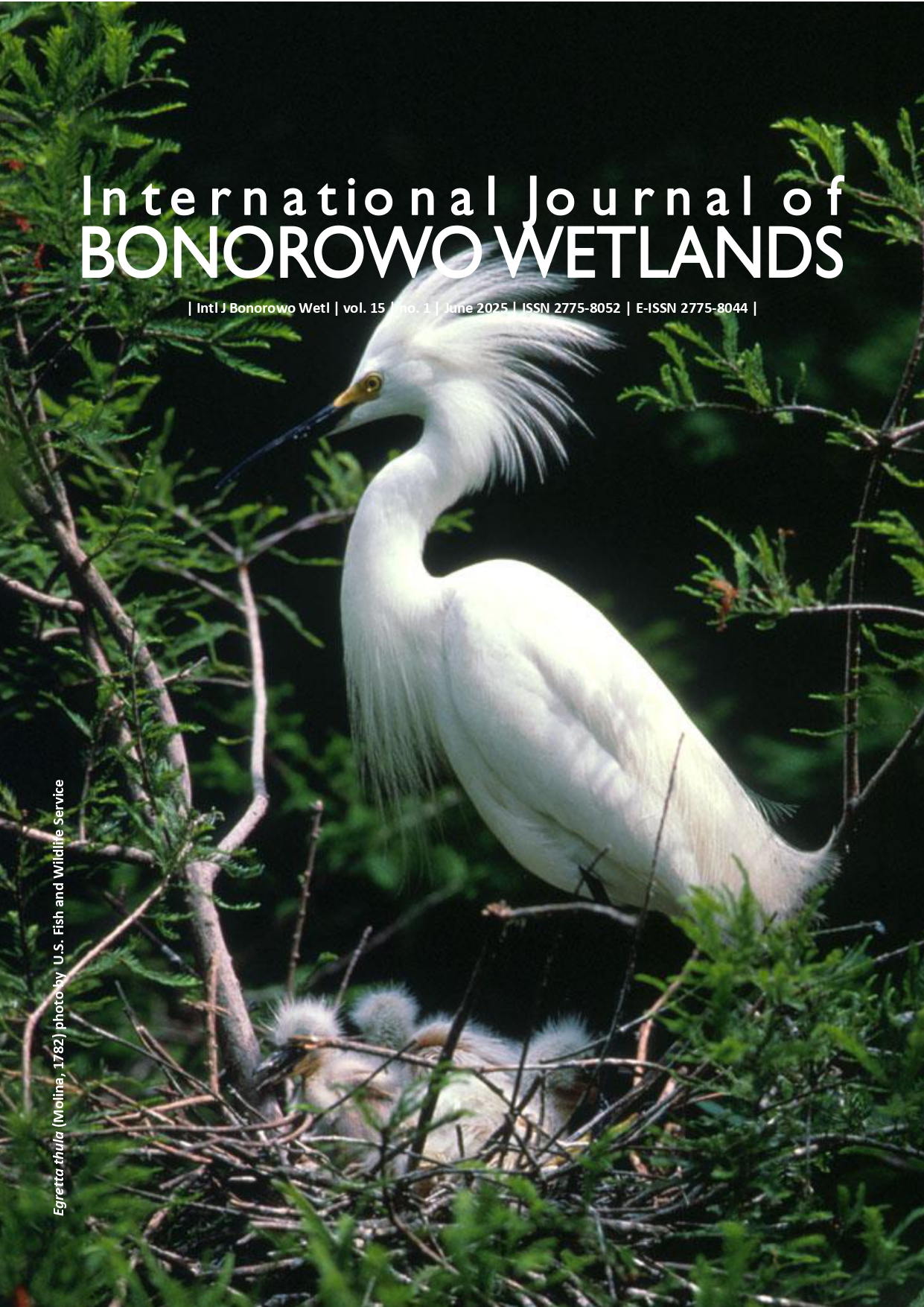Impact of distance from the water body on the point of zero charge of Dutsin-Ma Dam floodplain soils, Katsina State, Nigeria
##plugins.themes.bootstrap3.article.main##
Abstract
Abstract. Abdulkadir A, Manne IZ, Sani S. 2025. Impact of distance from the water body on the point of zero charge of Dutsin-Ma Dam floodplain soils, Katsina State, Nigeria. Intl J Bonorowo Wetlands 15: 1-6. This study investigates the point of zero charge (ZPC) and its influence on soil chemical properties in the floodplain around the Dutsin-Ma Dam. The report rigorously examines how proximity to the dam influences critical soil parameters such as pH changes (?pH), ZPC, and surface potential (?0) across three zones: Onshore, Mid-shore, and Offshore. Soil samples from these three zones were meticulously analyzed to assess variations in these parameters, which are vital for understanding soil fertility and nutrient availability. The results show that ?pH decreases with increasing distance from the dam, indicating reduced pH fluctuation in offshore soils. ZPC values increase from onshore to offshore, suggesting that soils farther from the dam reach zero net charge at higher pH levels. Additionally, the surface potential (?0) becomes increasingly negative with distance from the dam, indicating a lower offshore cation exchange capacity (CEC). These findings underscore the significant influence of dam proximity on soil chemical properties, which has practical implications for soil management and agricultural practices. Understanding ZPC and related parameters is essential for optimizing soil fertility and promoting sustainability in floodplain environments. This research provides actionable insights that can empower practitioners to improve agricultural practices and long-term soil health in regions impacted by dam-induced flooding.


 https://orcid.org/0000-0002-9330-2678
https://orcid.org/0000-0002-9330-2678